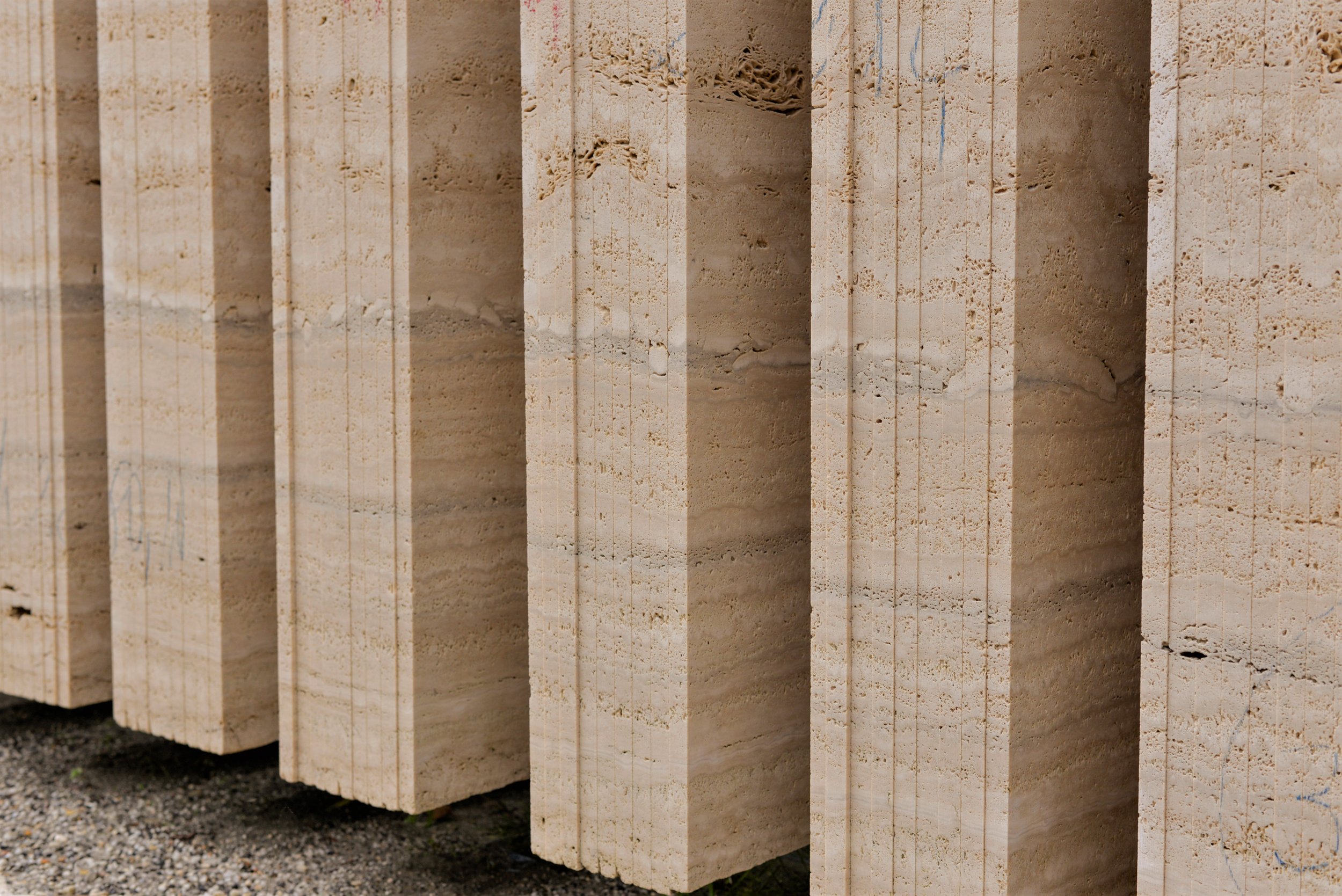Travertine: Italy vs Turkey
Travertine is one of the most aesthetic and sought-after natural stones for architectural and interior spaces today. Even though travertines are quarried from many regions around the world, the two main sources are Italy and Turkey. This blog explores some general differences between the two variants.
Colour and Veining
Travertine from Italy tends to feature cooler tones, including ivory, soft creams, elegant whites, and subtle greys. Veining patterns of Italian travertine are more continuous, consistent and, in our opinion, more aesthically pleasing. The veins are subtle and delicate.
In contrast, Turkish travertine exhibits a wider range of colours and often showcases warmer tones such as rich beiges, warm browns, and earthy hues. Turkish variant tends to have more pronounced and varied veining patterns. The veins are generally thicker, bolder, more irregular and distorted.
The differences, at first glance, may seem somewhat minimal when viewed individually but become quite apparent when they are compared side by side, as illustrated in the images below:
Density and Durability
Italian travertine is generally stronger, denser and less porous compared to Turkish travertine. This can affect its durability and suitability for different applications. Less porous travertine tends to be more resistant to staining and moisture penetration.
Quality and Consistency
Now, onto the important part, which is the quality. Italian travertine is often associated with higher quality due to its greater durability and more consistent coloration, as well as its desirable veining pattern. Italian quarries have a long history of producing premium travertine with meticulous attention to detail. On the other hand, the quality and consistency of Turkish travertine are generally much more varied. Finding high-quality Turkish travertine with the ideal veining pattern is much more challenging than with the Italian counterpart.
Availability and Cost
With higher quality comes higher costs. Italian travertine, often deemed more luxurious and exclusive, naturally commands a higher price tag. It is also available in limited quantities. Turkish travertine is typically more widely available and tends to be more cost-effective compared to Italian travertine. Its accessibility makes it a popular choice for a wide array of projects.
Italian Travertino Classico - consistent and uniform Veins
Bottom Line
Ultimately, the choice between Italian and Turkish travertine depends on factors such as aesthetic preferences, durability, budget, and project requirements. Both varieties offer unique beauty and character. It is important to be aware of these key differences and to consider these factors carefully before making any decisive decisions for your projects.
Explore our Travertines from past projects: Travertine Materials Gallery
Learn more about: The Differences between Marbles and Travertines
Discover our full range of travertine materials: Travertine Catalog






